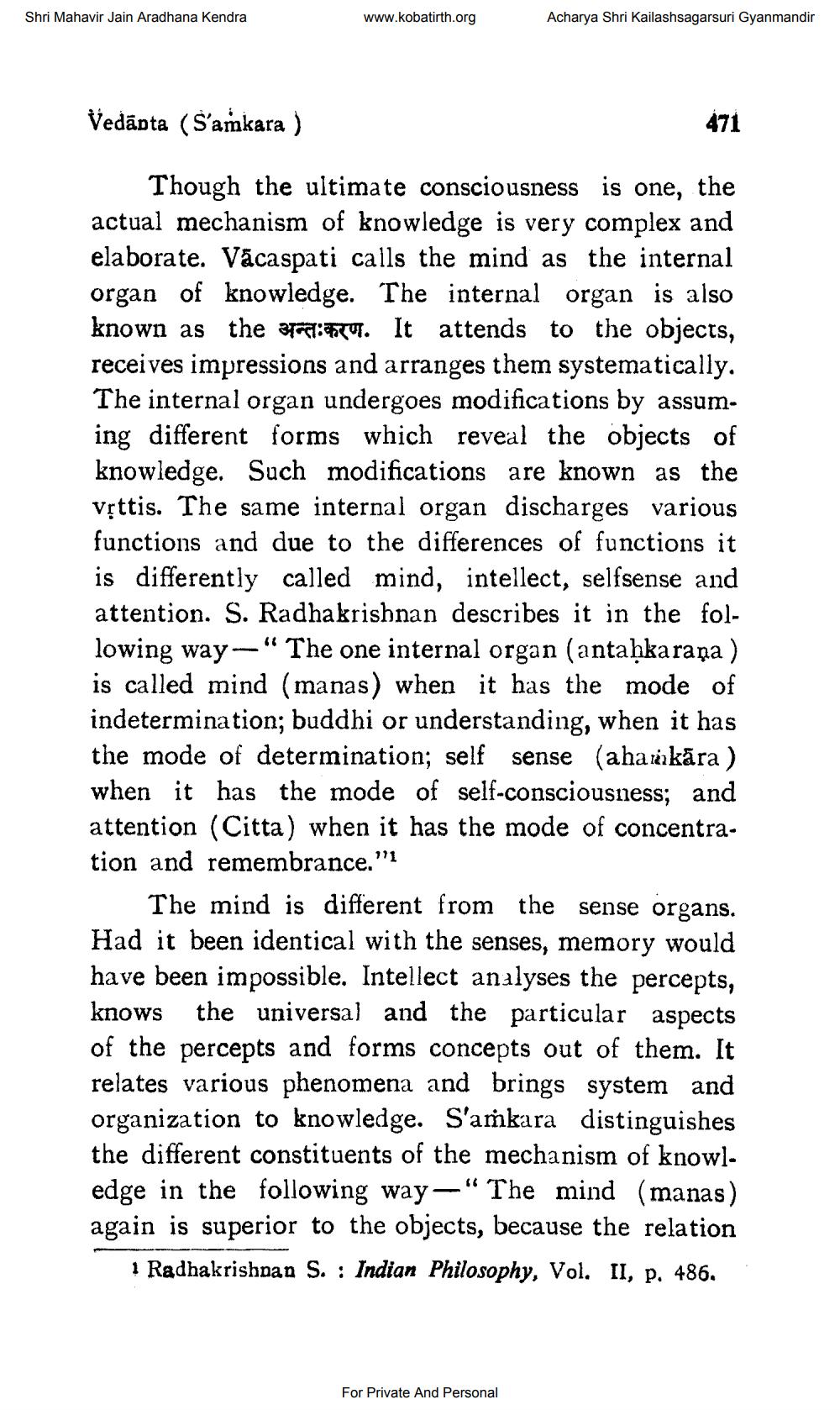________________
Shri Mahavir Jain Aradhana Kendra
www.kobatirth.org
Acharya Shri Kailashsagarsuri Gyanmandir
Vedāpta (S'amkara )
471
Though the ultimate consciousness is one, the actual mechanism of knowledge is very complex and elaborate. Vācaspati calls the mind as the internal organ of knowledge. The internal organ is also known as the 3771:20. It attends to the objects, receives impressions and arranges them systematically, The internal organ undergoes modifications by assuming different forms which reveal the objects of knowledge. Such modifications are known as the vịttis. The same internal organ discharges various functions and due to the differences of functions it is differently called mind, intellect, selfsense and attention. S. Radhakrishnan describes it in the following way—“The one internal organ (antaḥkaraña) is called mind (manas) when it has the mode of indetermination; buddhi or understanding, when it has the mode of determination; self sense (ahar kāra ) when it has the mode of self-consciousness; and attention (Citta) when it has the mode of concentration and remembrance."
The mind is different from the sense organs. Had it been identical with the senses, memory would have been impossible. Intellect analyses the percepts, knows the universal and the particular aspects of the percepts and forms concepts out of them. It relates various phenomena and brings system and organization to knowledge. S'amkara distinguishes the different constituents of the mechanism of knowl. edge in the following way-" The mind (manas) again is superior to the objects, because the relation
! Radhakrishnan S. : Indian Philosophy, Vol. II, p. 486..
For Private And Personal




